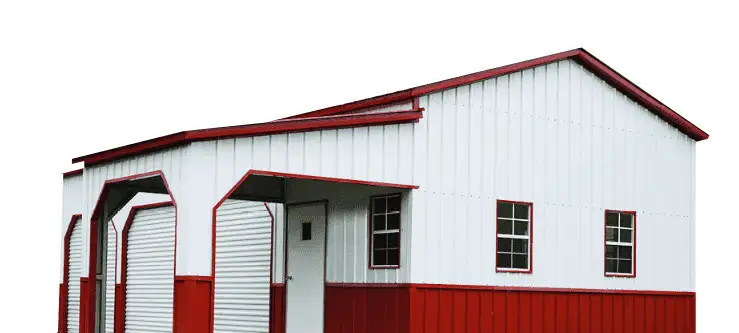Purchasing a steel structure is an extensive process, and you’ll want to perform the necessary research to get exactly what you need out of your building. However, there’s no doubt that you’ll pick up a few questions along the way. And to help, we’ve put together some of our most frequently asked questions.
As the name suggests, a ‘pre-engineered’ building is a structure type designed by an engineer who determines the building’s specifics before construction. Conversely, a ‘prefab’ building describes a structure where all or part of the structure is constructed in a factory.
Steel structures can be built in a fraction of the time compared to wooden buildings. Where a stick-built structure might take months to make, a steel building can be completed in days or weeks.
Yes! Prior to ordering your structure, you’ll want to consult with your local building authorities to determine what permits you’ll need and which regulations you’ll need to be aware of. Failure to do so can result in significant penalties.
Absolutely! One of the best aspects of metal structures is their customizability. With a steel building, almost every facet of the structure can be changed, adapted, and customized to suit your exact needs.
Yes! Steel structures create a much smaller carbon footprint compared to lumber-built buildings. They’re 100% recyclable, too! In fact, when your structure has reached the end of its natural life, it can be melted down and transformed into something new with no degradation to its strength or quality!
You can get a reasonably accurate measurement of your structure using a measuring tape or measuring wheel. This will give you an idea of how large your new building can be. Regarding height, most metal buildings will require a minimum of 8 feet in height. However, if you’re storing larger vehicles or need more room, these structures can be built to the size you need.
Most residential metal buildings will use 14-gauge steel framing as the industry standard. But if your building is a commercial structure, or if you live in a region that regularly sees violent weather, you may need to upgrade to the thicker 12-gauge steel.
The certification process is a standardized system that ensures a particular structure can handle the wind, snow, and seismic loads in a given region. This process is location specific and is often required to receive building permits from local authorities.
Not necessarily. However, certification is often needed to receive your building permits and will be required if you hope to add your structure’s value to the overall appraisal value of your property.
Commercial buildings are held to higher zoning and permitting standards than residential structures. Therefore, you’ll want to carefully coordinate between your local authorities and a building specialist to determine the steps you’ll need to take.
Yes! We offer a fantastic RTO program, with no hard credit checks and same-day approvals!
Absolutely! We’re proud to work with an extensive network of lenders to ensure you get some of the best financing terms in the business!
Yes, and no. We offer a wide selection of colors to give you plenty of choices. However, some color options might be considered premium and may carry a slightly increased price.
You’ll be able to make any changes you need to your structure until it reaches the manufacturing floor!
Luckily, your building will be engineered to need minimal repair or maintenance. Simply keeping your roof free of debris and giving it an inspection every few months should be sufficient to keep your building in top shape for years to come.

